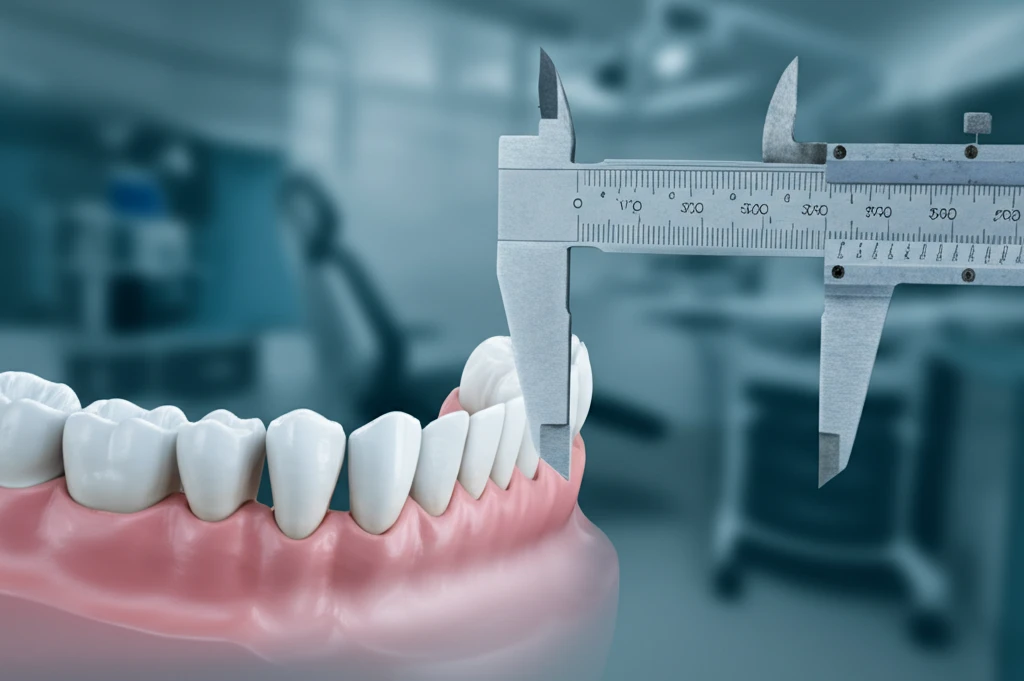
Are Your Dental Implants Up to Par? How Clinician Assessments Could Be Missing the Mark
"Dive into the world of dental aesthetics and discover why your perception of your implant might differ vastly from your dentist's viewpoint."
In the quest for a perfect smile, dental implants have become a popular solution for replacing missing teeth. Specifically, anterior implant-supported single crowns aim to restore both function and aesthetics in the most visible part of your mouth. But what happens when your idea of a successful outcome doesn't quite match your dentist's?
A recent study published in the Clinical Oral Implants Research journal sheds light on this critical question, exploring the aesthetic outcomes of anterior implant-supported single crowns as evaluated by both patients and clinicians. The findings reveal a significant divergence in perception, challenging conventional assessment methods and highlighting the importance of aligning patient expectations with clinical evaluations.
This article will unpack the key findings of this study, discuss the implications for patients considering dental implants, and provide insights into how to bridge the gap between clinical assessments and patient satisfaction.
The Aesthetic Gap: Why Your Dentist's 'Perfect' Might Not Be Yours

The study, conducted at the National Dental Centre Singapore, involved 133 patients who received 138 implant-supported anterior crowns. Researchers compared patient satisfaction, measured using a visual analogue scale (VAS) questionnaire, with clinical assessments performed by both prosthodontically-trained clinicians (PTCs) and general dentists, using the modified Pink Esthetic Score White Esthetic Score (PES WES) index.
- Divergent Perceptions: A significant portion of patients were generally satisfied with their implant restorations, even when the clinical assessments, according to PES WES criteria, did not meet the threshold of clinical acceptability.
- Weak Correlation: The study found a weak correlation between PES WES scores and patient VAS scores, indicating that a high clinical score does not necessarily translate into high patient satisfaction.
- Specialist Discrepancies: Prosthodontists, who are highly specialized in restorative dentistry, tended to be stricter assessors compared to general dentists and other specialists, highlighting the variability in aesthetic perception even among dental professionals.
Bridging the Gap: Towards Patient-Centered Implant Care
The key takeaway from this study is the critical need for enhanced communication and shared decision-making between dentists and patients throughout the dental implant process. Here’s how you, as a patient, can take a proactive role in ensuring your satisfaction: <ul> <li><b>Open Communication:</b> Express your aesthetic goals and concerns clearly to your dentist from the outset. Don't hesitate to ask questions about the PES WES index or other assessment tools.</li> <li><b>Realistic Expectations:</b> Understand that clinical perfection, as defined by standardized indices, may not always align with your personal aesthetic preferences. Discuss potential compromises and explore options that best meet your individual needs.</li> <li><b>Visual Aids:</b> Utilize before-and-after photos, smile simulations, or trial restorations to visualize the potential outcome and ensure it aligns with your expectations.</li> <li><b>Choose a Qualified Professional:</b> Seek out experienced implant dentists who prioritize patient satisfaction and have a keen eye for aesthetics. Don't hesitate to get a second opinion if you're unsure.</li> <li><b>Post-Treatment Follow-Up:</b> Maintain regular follow-up appointments to address any concerns or adjustments needed after the implant is placed.</li></ul> By fostering a collaborative relationship with your dentist and actively participating in the treatment planning process, you can significantly increase your chances of achieving a dental implant that not only functions flawlessly but also makes you confident to smile. After all, a truly successful dental implant is one that meets both clinical standards and your personal aesthetic expectations.
